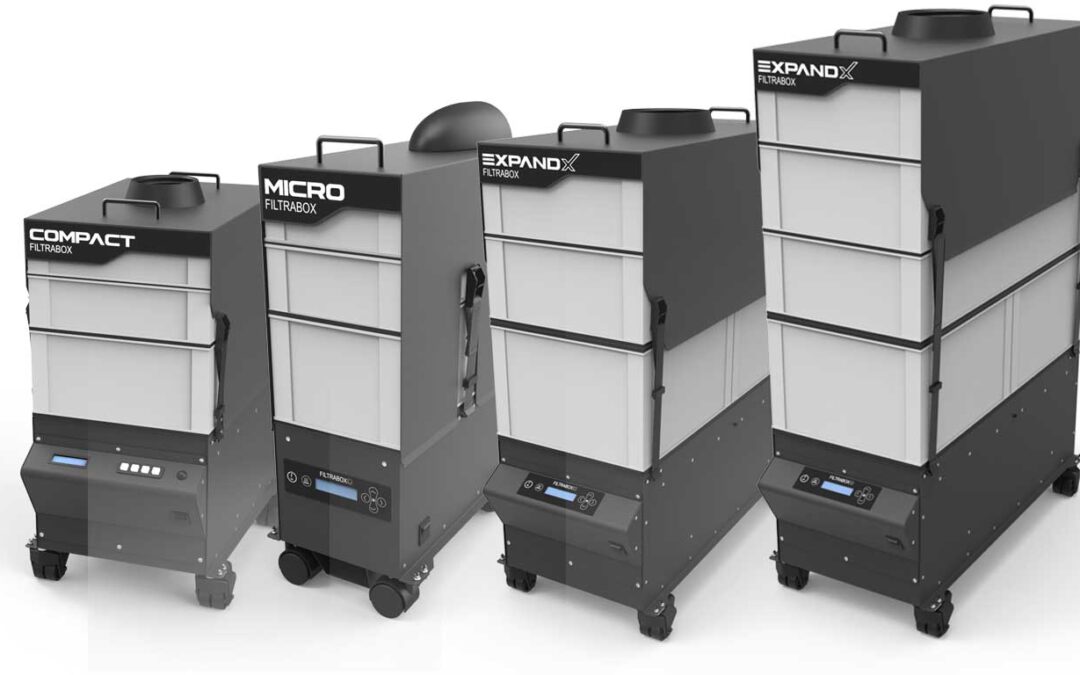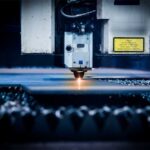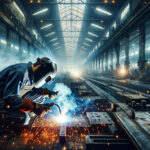Are you wondering what a fume extractor is used for? Read on to learn just a few of its uses in various industries and applications.
Fume Extractors are filtration machines that rid the air of harmful dust and fumes produced while working on various industrial processes.
Therefore, the point of a fume extractor is the workers’ health. Institutions such as OSHA (Occupational Safety and Health Administration) have local, regional, and nationwide regulations that need to be upheld. For example, OSHA has set Permissible Exposure Limits (PELs) that must be adhered to.
OSHA and other Safety and Health organizations can conduct surprise inspections to check this, and businesses can face hefty fines. More importantly, employees may get sick, and business owners could face potential legal repercussions if they were found to be negligent with the air quality in the workplace and, thus, with the workers’ health.
Employees exposed to polluted air could, for example, develop occupational asthma or even fatal pneumonia. There is a vast range of health issues caused by impure air, and unfortunately, many business owners have not realized the pressing need to test and clean up their air. For further information, here is a list of the major institutions regulating Safety and Health in the Workplace:
Canadian Centre for Occupational Health and Safety – CCOHS (CAN)
National Institute for Occupational Safety and Health – NIOSH (USA)
Occupational Safety and Health Administration – OSHA (USA)
Health and Safety Executive – HSE (UK)
On the other end of the spectrum, employees who realize that the business owner is taking care of and protecting everyone’s health will be more motivated in the workplace. Fewer sick and personal days and increased output at work result from such improved workplace morale.
How Fume Extractors Work
Depending on the application area, an air filtration system may use different types of filters or even multiple ones in line. A ductless filtration system will employ a high-quality filtration medium and a powerful fan.
The recirculation of air allows for a ductless unit, which saves money on ductwork and electricity bills (less power consumption). Our extractors usually employ large-capacity carbon filters (with the EZ Lift feature) and positive air pressure.
To name but a few, we have invented our self-cleaning laser fume extractor (with easily accessible blowers, electronics, and a patented self-cleaning filter system) and designed the world’s first source capture filter for large format printers, consequently allowing the use of such large printers in formerly barred spaces such as malls and commercial office locations. ASHRAE, HEPA, and ULPA filters capture anything from light dust to particles such as allergens (e.g., pet hair and dander) and microorganisms (e.g., bacteria).
This makes them ideal for the everyday household ventilation system. Filters are either disposable or self-cleaning. As the name states, disposable filters are discarded as they reach capacity. Each of these has its unique benefits. Disposable models have a lower initial cost but require regular filter replacement.
Self-cleaning models cost more initially but provide future savings, as the filters are reusable. Cleanable filters are an excellent choice for work areas that produce high particle levels in the air. These filters are efficient against dust particles and some chemicals.
They are cleaned by applying pressurized air adjacent to the filter. The pollution will be gathered in a catch can, making disposal simple. On the other hand, filter mediums, such as activated carbon, absorb toxic vapor and chemical fumes.
Fume Extractor Setup
The fume extractor can be connected to an extraction hose kit or attached to the fume-generating machine (such as a welding, soldering, or laser cutter). This way, the fumes can be collected right at the source. Air contamination and a negative impact on employee health also become less likely.
Many fume extractors have optional features, such as automatic start-stop, automatic cleaning, shunt alarms, and power adjustment. Installing the correct filter is essential in achieving a high-end fume extraction and air quality result.
Our exceptional customer service is happy to assist you in detail with all the fume extractor needs for your specific business. Take the worry out of choosing the correct filter application for your production process, and let us guide you every step of the way. As previously mentioned, we are highly experienced in custom-designing filter solutions and are more than happy to assist you with this if needed.
Industries Where Fume Extractors Are Used
Fume extractors are required in a more comprehensive range of industries than one would expect. To name but a few, these are welding, sanding, soldering, 3-D printing, spray painting, and plastic bonding and gluing.
At Filtrabox.com, we have specialized in unique modular-bench filtration systems for lasers, printers, electronics, and health and beauty (e.g., to remove fumes during keratin treatments).
Our fume extractors’ modular capacity makes them exceptionally practical. You can start with a smaller model and add it to your extractor as your business grows, maximizing your financial resources.
Only invest money into expanding your machine when you are ready for it! Our carbon filters also have our “EZ Lift” feature. While it holds more carbon than other leading models and has superior efficiency and capacity, it also has easy-lift handles and an ergonomic design. This way, there is no strain on your back when you change filters.
Types of Fume Extractors
As so many industries utilize fume extractors, the types of extractors are nearly endless, and with that comes an immense price range. Fume extractors are available at prices ranging from under $1000 to just under $10,000.
How Long Will a Fume Extractor Last?
Due to the many variables involved, the filter’s lifespan in a fume extractor is nearly impossible to predict. It depends, for example, on the size of the filter, the amount of carbon in the filter, the duty cycle (hours used per day), and the material being worked on since some materials produce a greater amount of toxic fumes and dust than others.








Recent Comments